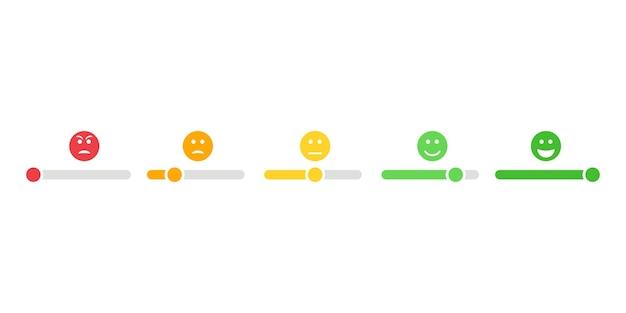Welcome to our blog post on the intriguing topic of a 7 point Likert scale! If you’ve ever taken a survey or participated in market research, chances are you’ve come across this type of scale. But what exactly is it and how is it used?
In this article, we’ll dive deep into the world of Likert scales, particularly focusing on the 7 point variation. We’ll explore its meaning, purpose, and advantages, and even touch on some related questions like “How do you read a neutral on a Likert scale?” and “What is an example of a Likert scale?” So, if you’re curious to learn more about the fascinating world of surveys and measurement techniques, you’re in the right place!
So, let’s get started and unlock the secrets behind the 7 point Likert scale!

What is a 7-point Likert scale?
If you’ve ever taken a survey or participated in a research study, you may have encountered a 7-point Likert scale. Don’t worry if you’re not familiar with the term; it’s just a fancy way of saying a 7-point rating scale. Let’s dive into this quirky rating system and uncover its secrets!
The Basics of the 7-point Likert Scale
The 7-point Likert scale is a popular tool used to measure attitudes, perceptions, and opinions. It consists of a statement or question and seven response options ranging from strongly disagree to strongly agree. Each response option is assigned a numerical value, usually from 1 to 7, with 1 representing the most negative or disagreeable response and 7 representing the most positive or agreeable response.
Getting to the Heart of the Matter
Imagine you’re asked to rate your love for pizza on a 7-point Likert scale. If you absolutely adore pizza and would happily eat it for breakfast, lunch, and dinner, you would likely choose the highest value on the scale, which could be “Strongly Agree” or “7.” On the other hand, if you’re not a fan of the cheesy delight and would rather opt for a salad, you might choose the lowest value, such as “Strongly Disagree” or “1.”
The Sweet Spot: Neutral Ground
Ah, the middle ground! The 7-point Likert scale conveniently offers a neutral choice, usually represented as “Neither Agree nor Disagree” or “4.” This option allows respondents to express their neutrality or uncertainty towards a statement or question. So if you have mixed feelings about pineapple as a pizza topping, the neutral option is here to save the day.
But Wait, There’s More!
While the 7-point Likert scale may seem straightforward, researchers often get creative by using different variations. Some scales may have different response options, such as “Completely Disagree” to “Completely Agree.” Others may use odd or even numbered scales, such as 6 or 10-point scales. So don’t be too surprised if you come across a scale that adds a little twist to things.
Making Sense of the Numbers
Once all responses are collected, researchers can crunch the numbers to gain valuable insights. They can analyze the mean, median, or mode of the responses to get a sense of the overall attitude or opinion. It’s like being a pizza connoisseur and gathering data on people’s love for different toppings to determine the most popular choice. Fascinating stuff, right?
Limitations and Interpretations
While the 7-point Likert scale is widely used and valuable, it’s important to remember that it has its limitations. It’s subjective by nature and relies on individuals’ interpretation and understanding of the scale. Additionally, it may not capture the full complexity of someone’s opinion, as it forces respondents to choose from predefined options. So, if you’re contemplating the depth of your pizza love, the scale may not quite capture the nuanced flavors of your feelings.
Now you’re equipped with knowledge about the mysterious 7-point Likert scale! Whether you encounter it in a survey or use it yourself, you can appreciate its simplicity and versatility. So go forth and rate with confidence, be it pizza preferences or anything else that requires your honest opinion!

FAQ: What is a 7 Point Likert Scale?
How to Interpret a Neutral Response on a Likert Scale
When using a Likert scale, a neutral response typically falls in the middle of the scale. For a 7 point Likert scale, the neutral response is usually represented by the number 4. It indicates that the respondent neither agrees nor disagrees with the statement or question being assessed.
Can You Provide an Example of a Likert Scale
Certainly! Imagine you are taking a survey on customer satisfaction with a product. The survey may contain statements like:
- Strongly Disagree
- Disagree
- Slightly Disagree
- Neutral
- Slightly Agree
- Agree
- Strongly Agree
Respondents can choose the option that best represents their opinion or level of agreement with each statement.
Which Likert Scale is Considered the Best
There isn’t necessarily a “best” Likert scale. The choice of scale depends on the specific needs of the research or survey being conducted. However, the 7-point Likert scale is one of the most commonly used scales. It provides more options for respondents and allows for a finer level of measurement compared to scales with fewer points.
What is the Main Purpose of Using a Likert Scale
The main reason to use a Likert scale is to measure people’s attitudes, opinions, or perceptions towards a particular topic or statement. It allows researchers to quantify subjective data and obtain a more comprehensive understanding of respondent perspectives.
What are the 4 Color Personalities
The concept of 4 color personalities refers to a psychological model that categorizes individuals into four distinct personality types based on their behaviors and preferences. The colors associated with these personality types are:
- Red: Strong-willed and assertive individuals.
- Blue: Caring and empathetic individuals.
- Green: Analytical and logical individuals.
- Yellow: Enthusiastic and spontaneous individuals.
How to Present Likert Scale Data
When presenting Likert scale data, the most common method is to display the results in a bar chart or a stacked column chart. This allows for easy visualization and comparison of responses across different categories or statements.
What is the Meanest Personality Type
While it’s important to remember that no personality type is inherently mean, certain personality traits might be perceived as less agreeable or more challenging in certain situations. However, it’s essential to approach personality assessment with an open mind and understand that individuals are unique and cannot be solely defined by a single type.
What Type of Survey is Indicated by “Strongly Agree”
“Strongly Agree” is commonly used in surveys that assess agreement or disagreement with a statement. This type of survey measures the strength of one’s opinions or beliefs. It allows respondents to express strong agreement with a given statement, positioning their response at the extreme end of the Likert scale.
Is it Preferable to Choose “Strongly Agree”
There is no right or wrong answer when it comes to selecting response options on a Likert scale. The choice of response depends on the individual’s true feelings or beliefs regarding the statement being assessed. However, it’s important to provide honest and genuine responses to ensure the accuracy and reliability of the data collected.
What is the Best Free Personality Test
Several free personality tests are available online, each with its own unique approach and focus. While it’s subjective to say which one is the “best” as it depends on an individual’s needs and interests, some popular options include the Myers-Briggs Type Indicator (MBTI), the Big Five Personality Test, and the Enneagram Test.
Can You Fail a Personality Assessment
No, it’s important to note that personality assessments are not meant to measure success or failure. They provide insights into an individual’s personality traits, behavioral tendencies, and preferences. The purpose is to foster self-awareness and facilitate personal growth, rather than passing or failing a test.
What are the Benefits of Using a 7-Point Likert Scale
Using a 7-point Likert scale offers several advantages. Firstly, it provides a greater level of granularity, allowing for more nuanced data analysis. Additionally, the wider range of options provides respondents with more freedom to express their opinions accurately. This results in more reliable and comprehensive data for researchers or surveyors to draw insights from.
Why are Likert Scales Sometimes Criticized
Some criticisms of Likert scales include the potential for response bias, the limitation of fixed response options, and the challenge of accurately interpreting the meaning behind responses. However, despite these criticisms, Likert scales remain widely used due to their simplicity, versatility, and the ability to quantitatively analyze subjective data.
How to Calculate a 5-Point Likert Scale
To calculate data from a 5-point Likert scale, assign numerical values to each point on the scale (e.g., 1 for “Strongly Disagree” and 5 for “Strongly Agree”). Sum up the values for each response category, divide by the total number of respondents, and calculate the average score. This will provide insights into the overall sentiment or agreement level regarding the assessed statement or question.
Why Should We Avoid Using 5-Point Likert Scales
While 5-point Likert scales are commonly used, they can sometimes limit the options for respondents and result in less nuanced data. Using a 7-point Likert scale or even a larger scale allows for more precise measurement and a better representation of the range of opinions or attitudes among respondents. This can lead to more accurate analysis and interpretation of data.
That wraps up our comprehensive FAQ section on the 7 point Likert scale! We hope it has provided you with helpful insights and answers to your questions. Feel free to reach out if you have any more queries or need further clarification. Happy surveying!
